| |
Hybrid Tube Headphone Amplifier |
|
Here's a simple to build hybrid tube headphone amplifier built around 12AU7 / ECC82 vacuum tube. I have always been intrigued by tube amplifiers, but most DIY kits are very expensive and use very high voltage. So I decided to build an amplifier that would be inexpensive and had the least amount of parts necessary to drive a pair of 32 ohm Grado headphones.
Having built several YAHA amps based on the fa-schmidt design, and a Szekeres Mosfet follower I wondered how the two would sound together. So I built the schematic into TINA-TI, a free spice based program to test circuits before the build, and the results were remarkable. Nearly 20dB of gain across 20Hz-100kHz from a 13VDC power supply.
As you see in the schematic and parts list, there are less than 30 discrete components and most DIY'ers will have them as spares from other builds. I chose the 12AU7 / ECC82 vacuum tube because it can be driven with low voltage and the filament voltage is 12.6 volts, so there is no need to regulate the voltage any further. I used 1/4W resistors in the first stage and 2W in the second. The 2W resistors may be overkill but I did not want to change them later. The 20ohm resistor must be a minimum of 5W and do not use wire wound, as the inductive characteristics will distort the response curve.

Figure 2: 12AU7 Tube / IRF612 Mosfet Headphone Amp Schematic
Table 1: Parts List - 12AU7 / IRF612 Headphone Amp
100k
100nF
100nF
1M
1uF
20ohm 5W
200 ohm 2W
220k 2W
470uF 50V
47k
5k 2W
12AU7 / ECC82
IRF612
LED Holder
LED
9-pin Tube Socket
Additional Notes - Parts List:
Heatsink must dissipate around 3W so 2.5-3 square inches, or less if you use a fan. Use heatsink paste and mica insulators as well as insulated washer. The tab of the Mosfet is at (12-13vdc)
Chassis of your choice, plan for ventilation.
13VDC switching power supply, can be between 12 and 13 volts to heat the filaments. Power jack is a generic DC jack from Radio Shack.
The MOSFET (T1) can be replaced by an IRF510, IRF610 or IRF611.
Construction - Tube / MOSFET Hybrid Headphone Amp
For the enclosure I used a Lansing MicroPak "C"; which I found on eBay for approx $8. This item was an overstock of some surround decoders and came with RCA connectors and pre-punched faceplates. The tube socket should be a 9 pin, this one was for older pixie tubes so there are more holes, but the 9-pin match perfectly.
Photograph 1: Lansing MicroPak Enclosure and PCB
I used RCA connectors for input and a 1/4" jack for an output, this was to accommodate my Grado SR125's and the holes in the plates were punched for a 1/4" jack.
The PCB had pre-existing solder runs and a ground bus so this dictated the location of the components If you build this on proto board make sure to leave room for the heatsink and the 20 ohm resistors to dissipate heat. Make sure to insulate the Mosfet from the heatsink with mica, and also use heatsink compound for better heat transfer. The tab of the Mosfet is at 12-13 volts and will destroy the power supply and component if it shorts to ground.
Photograph 2: Construction of Hybrid Headphone Amplifier
After all of the components were soldered I smoke tested the unit and made any necessary corrections.
Photograph 3: Tube / Mosfet Hybrid Amplifier Smoke Test
The tube heater draws 150mA at 12.6 and the whole amp draws 580 mA at startup and stabilizes at 550mA after the tube warms up; which takes a few seconds. I used a Canon AD-360U switching power supply from their small bubble jet printer. Since the drain of the Mosfet is connected directly to the positive rail any noise will be amplified. This power supply had virtually no noise.
Photograph 4: Hybrid Headphone Amplifier - Front View
Photograph 5: Hybrid Headphone Amplifier - Rear View
I used a 12V muffin fan dropped to 9V to cool the amp, two holes in the top allow air to rush in and the existing holes in the front and rear plate allow the air to flow well.
Photograph 6: Tube / Mosfet Hybrid Headphone Amplifier
Measurements - Tube / MOSFET Hybrid Headphone Amp
Here are a few scope shots of the 10 Hz sine wave response, as well as the square wave response at 100 Hz. The performance was very consistent and the voltage stayed the same over the most of the sweep. The TINA curve shows approx 19dB of gain over the spectrum of the audible range. The sound from my Grado SR125 headphones is crisp with a tight lower end. This amp is very nice considering the low voltage and low component count. It may not be true audiophile quality, but the average cost is only $40 USD or less.
Photograph 7: 10Hz Sine Wave
Photograph 8: 100 Hz Square Wave Response
This amp is perfect for the novice builder and the components are available at mouser, digikey. You can substitute other Mosfets as long as the resistance is similar and the internal capacitance does not effect the response curve. It is best to use TINA-TI to build the schematic and make any changes, this way you can check the ac output before building. This will save you much time.
Lastly, make sure that your headphones are not plugged into the jack while powering up or down, this amp as well as other DIY builds have a large rush of current at power up and down and damage can occur to you headphones if you are not careful.
I am sure you will be pleased with the sound of this little amp and better yet the price.
UPDATE 28 August 2008: I have built another version of this amplifier which is smaller, has less parts and runs off of a 12V battery. For full details, see the 12AU7 Tube / IRF612 MOSFET Hybrid Headphone Amplifier update on the DIY Audio Projects Forum.
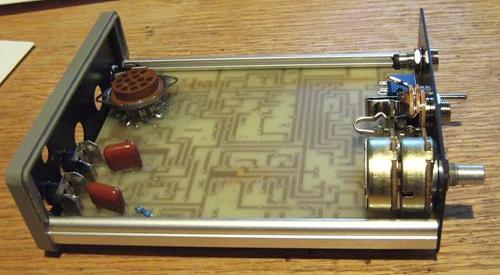

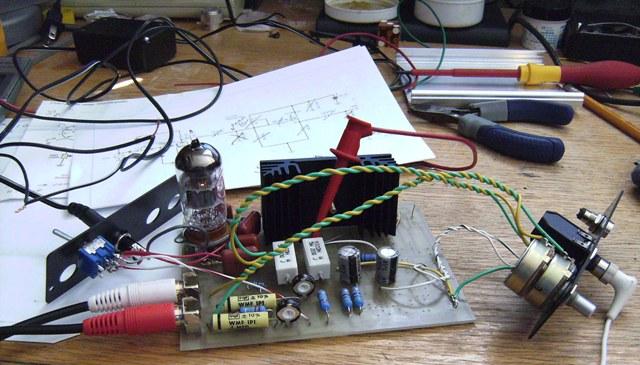
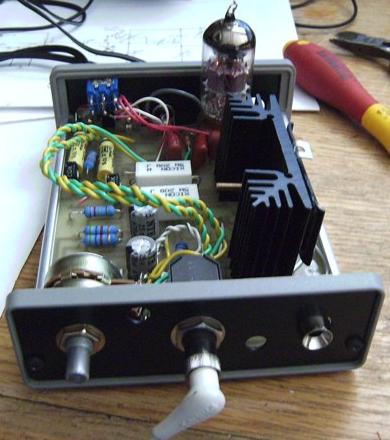
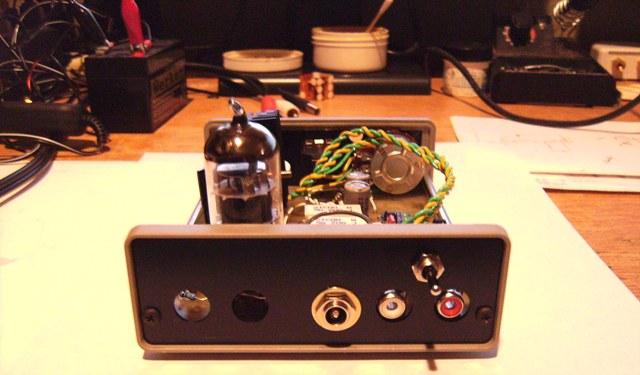
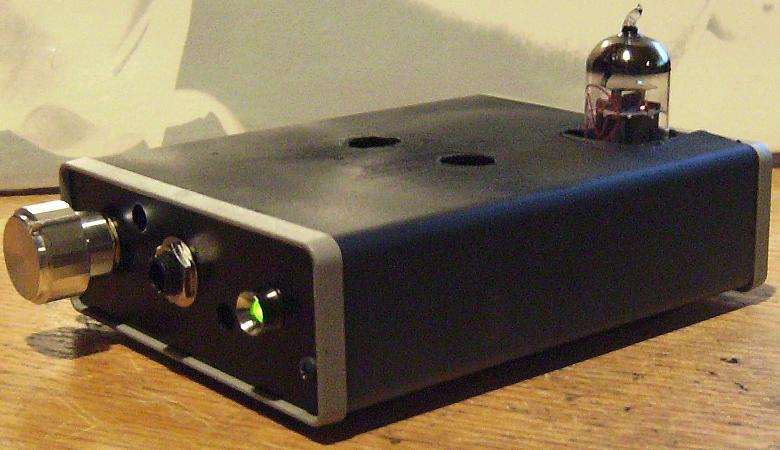
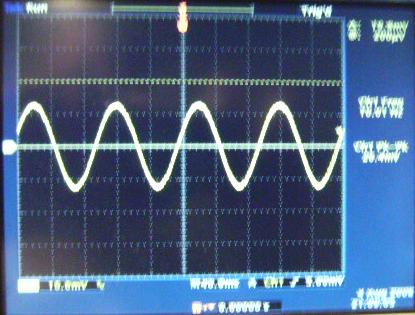
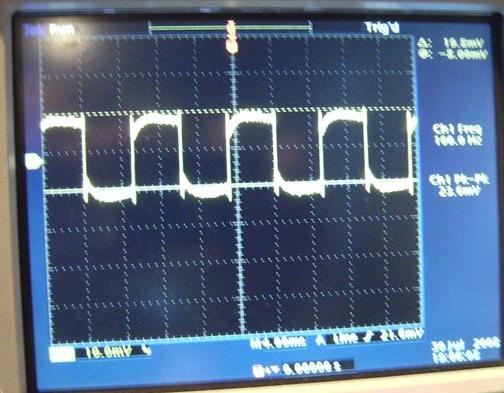
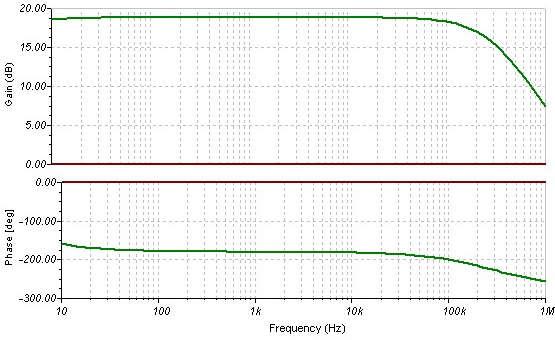
Related Links
Downloads
Hybrid Tube Headphone Amplifier - Link
|
|
|
| |
Accurate LC Meter
Build your own Accurate LC Meter (Capacitance Inductance Meter) and start making your own coils and inductors. This LC Meter allows to measure incredibly small inductances making it perfect tool for making all types of RF coils and inductors. LC Meter can measure inductances starting from 10nH - 1000nH, 1uH - 1000uH, 1mH - 100mH and capacitances from 0.1pF up to 900nF. The circuit includes an auto ranging as well as reset switch and produces very accurate and stable readings. |
|
PIC Volt Ampere Meter
Volt Ampere Meter measures voltage of 0-70V or 0-500V with 100mV resolution and current consumption 0-10A or more with 10mA resolution. The meter is a perfect addition to any power supply, battery chargers and other electronic projects where voltage and current must be monitored. The meter uses PIC16F876A microcontroller with 16x2 backlighted LCD. |
|
|
|
60MHz Frequency Meter / Counter
Frequency Meter / Counter measures frequency from 10Hz to 60MHz with 10Hz resolution. It is a very useful bench test equipment for testing and finding out the frequency of various devices with unknown frequency such as oscillators, radio receivers, transmitters, function generators, crystals, etc. |
|
1Hz - 2MHz XR2206 Function Generator
1Hz - 2MHz XR2206 Function Generator produces high quality sine, square and triangle waveforms of high-stability and accuracy. The output waveforms can be both amplitude and frequency modulated. Output of 1Hz - 2MHz XR2206 Function Generator can be connected directly to 60MHz Counter for setting precise frequency output. |
|
|
|
BA1404 HI-FI Stereo FM Transmitter
Be "On Air" with your own radio station! BA1404 HI-FI Stereo FM Transmitter broadcasts high quality stereo signal in 88MHz - 108MHz FM band. It can be connected to any type of stereo audio source such as iPod, Computer, Laptop, CD Player, Walkman, Television, Satellite Receiver, Tape Deck or other stereo system to transmit stereo sound with excellent clarity throughout your home, office, yard or camp ground. |
|
USB IO Board
USB IO Board is a tiny spectacular little development board / parallel port replacement featuring PIC18F2455/PIC18F2550 microcontroller. USB IO Board is compatible with Windows / Mac OSX / Linux computers. When attached to Windows IO board will show up as RS232 COM port. You can control 16 individual microcontroller I/O pins by sending simple serial commands. USB IO Board is self-powered by USB port and can provide up to 500mA for electronic projects. USB IO Board is breadboard compatible. |
|
|
|
|
ESR Meter / Capacitance / Inductance / Transistor Tester Kit
ESR Meter kit is an amazing multimeter that measures ESR values, capacitance (100pF - 20,000uF), inductance, resistance (0.1 Ohm - 20 MOhm), tests many different types of transistors such as NPN, PNP, FETs, MOSFETs, Thyristors, SCRs, Triacs and many types of diodes. It also analyzes transistor's characteristics such as voltage and gain. It is an irreplaceable tool for troubleshooting and repairing electronic equipment by determining performance and health of electrolytic capacitors. Unlike other ESR Meters that only measure ESR value this one measures capacitor's ESR value as well as its capacitance all at the same time. |
|
Audiophile Headphone Amplifier Kit
Audiophile headphone amplifier kit includes high quality audio grade components such as Burr Brown OPA2134 opamp, ALPS volume control potentiometer, Ti TLE2426 rail splitter, Ultra-Low ESR 220uF/25V Panasonic FM filtering capacitors, High quality WIMA input and decoupling capacitors and Vishay Dale resistors. 8-DIP machined IC socket allows to swap OPA2134 with many other dual opamp chips such as OPA2132, OPA2227, OPA2228, dual OPA132, OPA627, etc. Headphone amplifier is small enough to fit in Altoids tin box, and thanks to low power consumption may be supplied from a single 9V battery. |
|
|
|
|
|
Arduino Prototype Kit
Arduino Prototype is a spectacular development board fully compatible with Arduino Pro. It's breadboard compatible so it can be plugged into a breadboard for quick prototyping, and it has VCC & GND power pins available on both sides of PCB. It's small, power efficient, yet customizable through onboard 2 x 7 perfboard that can be used for connecting various sensors and connectors. Arduino Prototype uses all standard through-hole components for easy construction, two of which are hidden underneath IC socket. Board features 28-PIN DIP IC socket, user replaceable ATmega328 microcontroller flashed with Arduino bootloader, 16MHz crystal resonator and a reset switch. It has 14 digital input/output pins (0-13) of which 6 can be used as PWM outputs and 6 analog inputs (A0-A5). Arduino sketches are uploaded through any USB-Serial adapter connected to 6-PIN ICSP female header. Board is supplied by 2-5V voltage and may be powered by a battery such as Lithium Ion cell, two AA cells, external power supply or USB power adapter. |
|
200m 4-Channel 433MHz Wireless RF Remote Control
Having the ability to control various appliances inside or outside of your house wirelessly is a huge convenience, and can make your life much easier and fun. RF remote control provides long range of up to 200m / 650ft and can find many uses for controlling different devices, and it works even through the walls. You can control lights, fans, AC system, computer, printer, amplifier, robots, garage door, security systems, motor-driven curtains, motorized window blinds, door locks, sprinklers, motorized projection screens and anything else you can think of. |
|
|
|